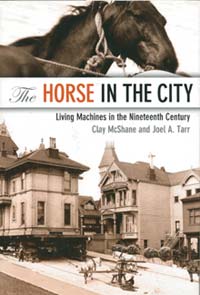 Recent news of a new strain of influenza spreading in Mexico reminded me of some interesting facts from the book The Horse In The City
Recent news of a new strain of influenza spreading in Mexico reminded me of some interesting facts from the book The Horse In The City, written by Clay McShane and Joel A. Farr and published in 2007.
Humans are victims and vectors for the flu in Mexico, but McShane and Farr remind readers of equine “epizootics” that a little more than one hundred years ago could shut down public transportation and teamster operations for weeks.
The first major American epizootics occurred during the Civil War, when military animals were tethered together on picket lines. The Union remount depot in the District of Columbia housed up to 30,000 horses, where as many as 300 horses died per day. During the first two years of the War, 248,000 Union Army horses died from glanders, alone.
Influenza, not nearly as fatal as glanders, but as economically debilitating, was the cause of the Great Epizootic of 1872. This was at a time when Chicago, the world’s largest horse market, saw up to 180,000 horses a year traded at the daily rate of 60 head per hour, and when Union Stockyards held 4,000 stalls.
Large cities finally began removing public watering troughs in the early 1900s, when they realized that they spread infection.
The impact of epizootics is just a fraction of the fascinating history detailed in The Horse In The City, a one-of-a-kind book about how horses shaped the American economy and urban development, in the latter half of the nineteenth century.
